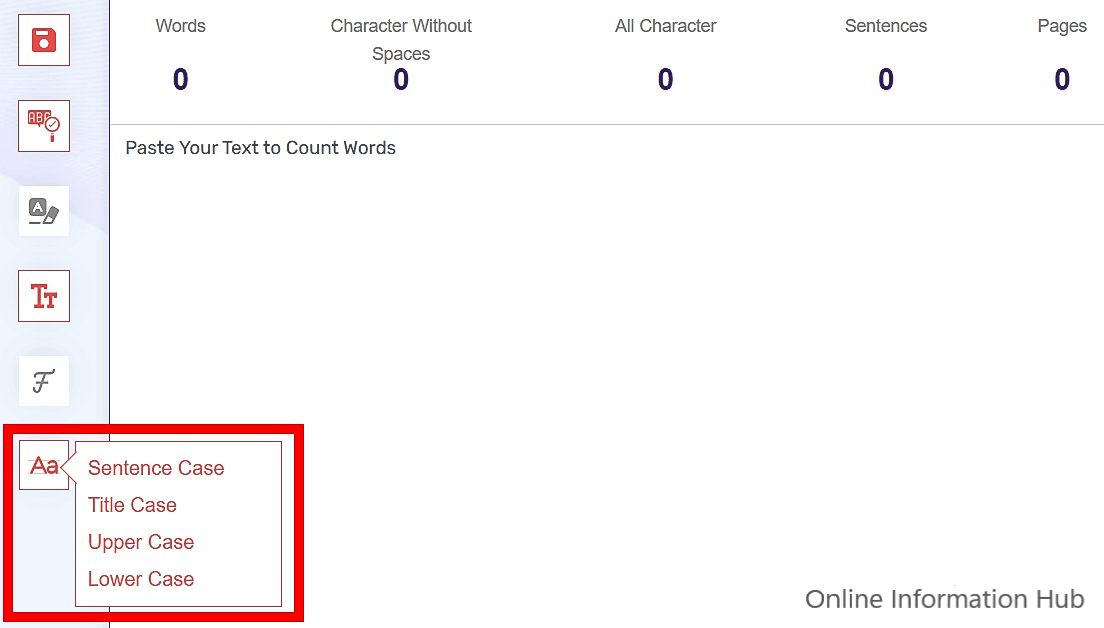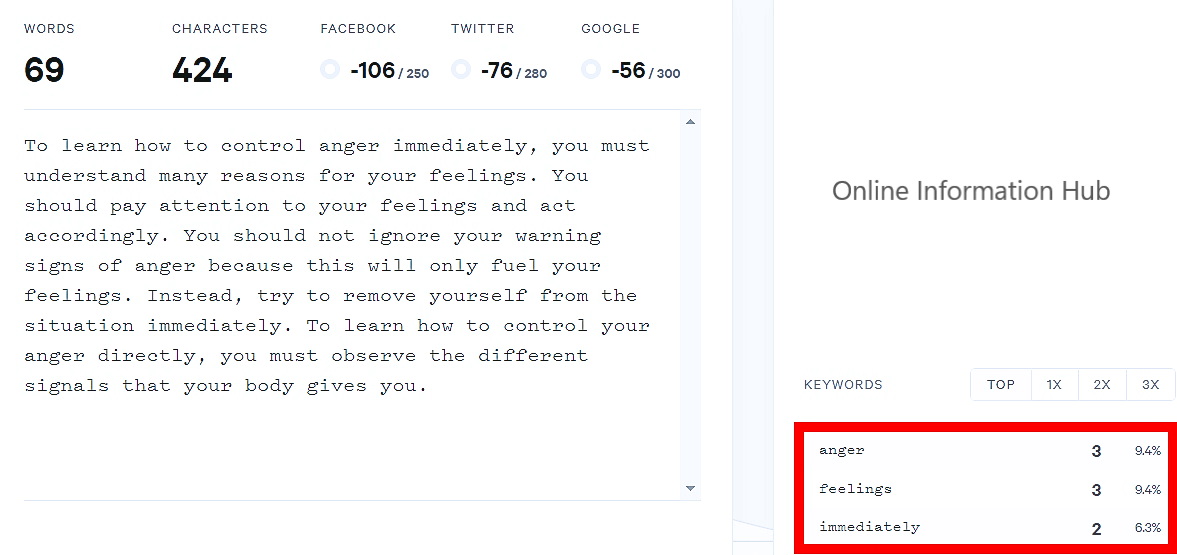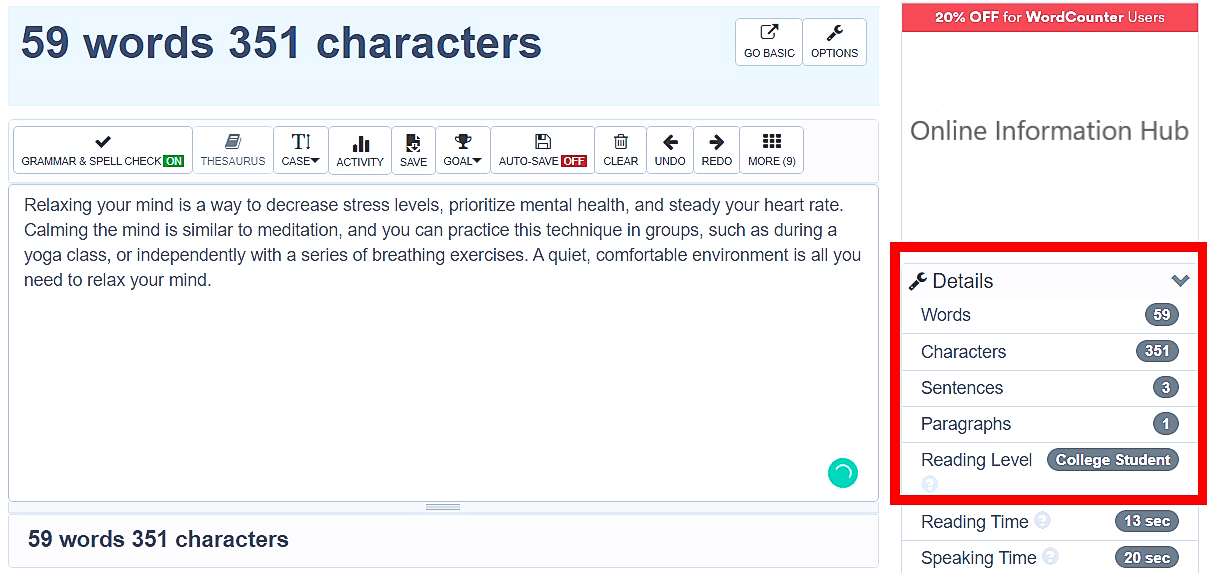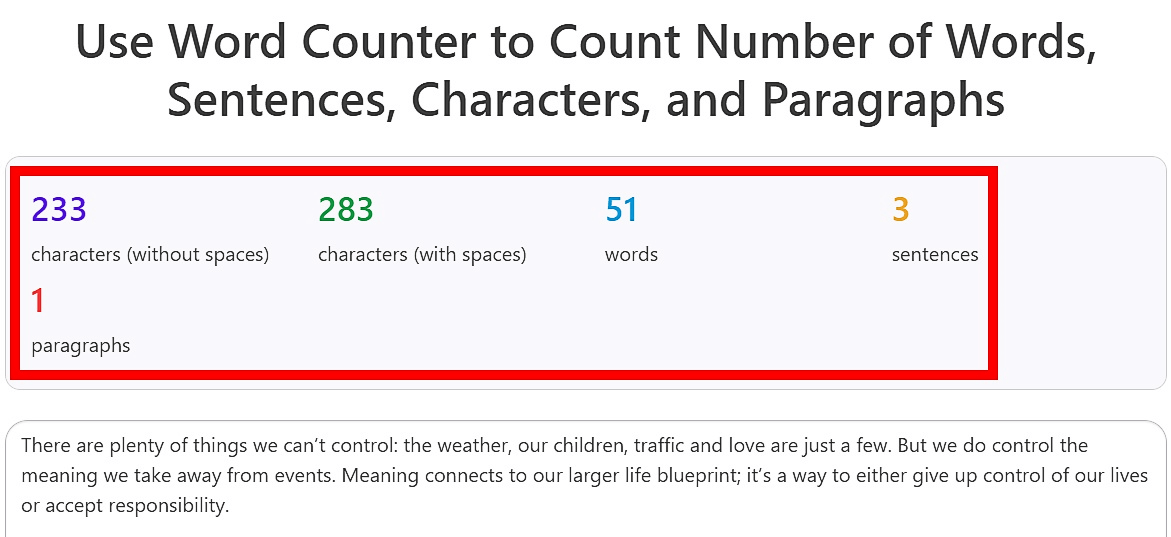
Any article has no word limit as long as you share value. Your main objective shouldn't be to share out-of-date information. Always share a well-researched article in limited words; you need the best word counter online tool to write a blog post within the word limit.
Whenever do you sit to write a post, cover each aspect so the readers won’t have to go to any other blog to get more knowledge about the same topic, but what to do when you have to write a blog post within given word limits?
Generally, we do prefer sharing 2000+ words in a post. The rest depends on the topic. If a blog post needs only 1000 words, we would never stretch it over 1000+ words. Before we dive into the best word counter online tool to write a blog post within a given word limit, let's understand some facts:
Do the Research
If you have been asked to write a thousand-word article, you won’t be able to write it within the given word limit unless you perform healthy research in advance. Writing a blog post is all about research. You need to know what you are writing about and be able to back up any claims or opinions with good sources. It’s crucial for you as a writer and your readers to ensure everything in your blog is factual, correct, and credible.
So start gathering information on the topic before writing your blog post's first draft. If possible, try talking to people who have experienced what it’s like living with this condition or have been through something similar themselves (friends, family members).
You could also look at websites that offer advice on dealing with specific conditions; these sites often have forums where people can ask questions and share experiences.
Create an Outline
Creating an outline is one of the best ways to help you stick to your word limit. Doing this will give you a skeleton guide of what must be in each section and how much content is required.
The first step is creating the skeleton is the bones of your article. Use this as a guide for planning and writing as a checklist when writing your draft. Review it after finishing each section so there are no gaps in information or ideas missing from the final draft.
The outline also guides writing because it tells you where each piece should go, so consider using bullet points or numbered lists if they make sense when discussing topics within each section.
Write Your Post, Then Edit It
Once you’ve written your blog post draft, it’s time to edit and proofread it. Unfortunately, this is where most people fall short because editing can be tedious and time-consuming, significantly if you have exceeded the prescribed word limit. But editing is an essential part of the process if you want your blog post to be successful.
- Take out unnecessary words wherever possible (to reduce the number of words).
- Check for grammar errors (misplaced commas and apostrophes are easily missed on electronic devices).
- Please ensure there aren’t any spelling errors in your post (it’s easy to get distracted when writing).
- If a sentence doesn’t make sense when you read it aloud, there’s probably a mistake somewhere. (So it’s better to take it out).
You may also like to read:
- 8 Best Client Management Software for Small Business
- Tips on How Much to Charge for Consulting Fees
- Affiliate Marketing Myths and Facts You Should Know
- 14 Best Free VPN Apps for iPhone and iPad
- ZenMate VPN Review with 8 Facts: Is it Safe and Fast?
Put the Most Important Sentence at the Beginning of Each Paragraph
The topic sentence is one of the most critical parts of a great blog post. It sums up the main idea of your paragraph, which you should be able to express in just one or two sentences.
The rest of your paragraph will support this main idea with details and examples that add meaning, but only if you put them in their proper order. The key here is knowing how important it is for those supporting sentences to follow after the topic sentence so they don’t derail from their purpose.
Write Shorter Sentences
Short sentences help keep your write-up within limits. They are easier to read and, therefore, easier to understand. They also make your writing sound more professional, making the blog post more credible in your readers’ eyes.
To shorten sentences, use semicolons:
- Semicolons can be used in place of periods when you want to link two sentences together and keep them separate simultaneously. For example: “I’ve never been good with computers; I’m sure there’s a better way.”
Or colons:
- Colons are used in place of periods when you want to indicate that more information or an explanation comes up after that sentence has been said. For example: “Let me tell you about my new job: I work as a data entry clerk at an insurance company.”
Or dashes:
- Dashes are used to emphasize or interrupt speech as they add energy to your words.
Write Within a Given Word Limit
It may seem like a tall order, but you can write in any word count if you put your mind to it.
Write in a conversational style with clear and concise points. You want your audience to feel like they are having an actual conversation with you so they don’t get bored or confused by too much text at once.
Break up the text with descriptive and catchy subheadings to draw attention without being gimmicky.
Consider how often people are likely to read each paragraph before deciding which ones deserve their heading; this will help prevent repetition when summarizing the main points later.
Write down title concepts as soon as you have them to refine them later. Even better, try to develop a few different ideas so that no matter what occurs throughout the editing process, one concept will always work.
If needed, try rephrasing sentences until they sound more natural instead of just trying harder to get words down faster than usual. The following are the best online word counter tools to keep track of your word count and focus on your content.
Which Features Should You Look for in Word Counter Online Tool?
When choosing a Word Counter Online Tool, you must consider its features. The first feature you should look at is the accuracy of the tool. The tool should be capable of providing precise results. You also need to consider the types of files that the tool can handle. A good word counter tool should be able to count words, characters, and even paragraphs in various document formats such as Microsoft Word, PDF, and HTML.
Another essential feature you should look at is the speed of the tool. The tool should be fast enough to provide you with instant results. A slow tool can be frustrating and can waste your precious time. The tool should also be user-friendly and easy to use. It should have a simple interface that anyone can navigate easily.
The ability of the tool to provide additional functionalities can also be a point of consideration. For instance, some word counting tools come with a readability score that analyzes your write-up's readability level for your target audience. Other tools can provide a keyword density analysis that helps you determine the frequency of specific keywords in your document.
When choosing a word counter online tool, you should consider its accuracy, speed, user-friendliness, and additional functionalities. These features will help you to choose the right tool for your content writing needs.
Best Word Counter Online Tool List
An online word counter lets you keep your blog posts within prescribed word limits. Above, we discuss how to write a blog within given word limits; let’s look at the top best word counter online tools to keep track of the total number of words in your blog posts.
1. Word Counter – Counts Every Word Prudently
You can use the online word counter to keep your write-up under limits. This helpful tool lets you count the number of words in your blog and provides many additional features.

- The AutoSaved feature (when turned on) automatically saves your text so that you don’t lose information after typing or pasting it in the designated area.
- The grammar checker highlights areas of misspelled words and incorrect use of grammar. You can turn this feature on to spot mistakes in your blog and make corrections before making the article live.
- The clear text feature helps you clear the entire text in a single click. You don’t need to select all the text and then remove it.
- The font size feature can also increase or decrease the text size. If you struggle reading smaller text, increase the size to improve readability.
- You can also choose a specific style of your text from the text style selector on the left-hand side.
Aside from the above features, the online Word Counter also lets you know word density. You can see the exact percentage or frequency of a specific word used in your blog.
It works on all operating systems like Windows, Mac, Android, and IOS. However, you will need a web browser and an internet connection to make it work.
Once you land on the word counter tool, it is ready to roll. The online sentence counter works on all the latest browsers, and you do not need to sign-up, sign in, or install anything to use this word counter online.
2. WordCounter.io
Word Counter is an easy-to-use online tool for counting words, characters, sentences, paragraphs, and pages in real time, along with spelling and grammar checking. Start by typing directly into the text area or pasting your content elsewhere.

Word and character counts will display at the top, underlining any writing mistakes, and your most frequently used keywords will appear to the right.
You can also use Word Counter to track your text length against common web standards like Twitter's tweet character count, Google's meta description, and Facebook's average post display length (~250).
Suppose your text is longer than 360 characters. In that case, the counter will show you the number of sentences, paragraphs, and pages instead, useful metrics for blog posts, articles, papers, essays, dissertations, and other long-form content.
Recommended for you:
- 8 Latest Ways to Check Internet Speed
- How to Get Google AdSense Account Approval for New Blog
- 52 Best Online Business Ideas for Beginners With Positive Results
- 20 Best Free WordPress Blog Themes
- Remove Microsoft AutoUpdate From Mac Device with 3 Easy Ways
3. WordCounter.net
Knowing the word count of a text can be substantial. For instance, if a writer must write a specific minimum or maximum word count for an article, essay, report, narrative, book, paper, etc., WordCounter will help ensure its word count reaches a specific requirement or stays within a certain limit.

Apart from counting words and characters, the wordcounter online editor can help you improve your word choice and writing style and, optionally, help you detect grammar mistakes and plagiarism. Place your cursor into the text box to check word count and start typing.
You'll see the number of characters and words increase or decrease as you type, delete, and edit them. You can also copy and paste text from another program into the online editor. The Auto-Save feature will ensure you won't lose any changes while editing, even if you leave the site and return later.
In addition, WordCounter shows you the top 10 keywords and keyword density of the article you're writing. It lets you know which keywords you use, how often, and at what percentages. It can prevent you from over-using certain words or word combinations and check for the best distribution of keywords in your writing.
In the details overview, you can see your text's average speaking and reading time. At the same time, the reading level indicates a person's education level to understand your words.
4. Word Counter Tool
Word Counter Tool is a free online word count tool to help you count and calculate the number of words in a text. This online tool can also calculate the total character or letter count, sentences, and paragraphs for the text entered in the input box. The best part is the unlimited number of words and characters you can count with this tool.

Word count is essential for writing, especially in publishing, advertising, academia, and legal proceedings. Using this tool, you can determine how many words are in your text. You can then check whether there are enough words or if it has exceeded a specific limit.
This free online word counter can also help to check how many characters your text contains, mainly if your text is meant for use on social media, Google Ads, apps, website headlines, or Google meta descriptions.
Selecting the Best Word Counter Tool
Word counting is essential to content writing in today's digital world. Whether you are a blogger or a professional writer, you need to know the exact word count of your write-up. Word counter online tools provide an efficient way of achieving this.
In this list above, we have handpicked the best word counter tools with different features to fulfill all text counter-related requirements.
Since all the options mentioned above have unique features, I suggest you pick the best word count tool based on your requirement. Please comment below if you know of other best free word counter websites offering additional special features.





